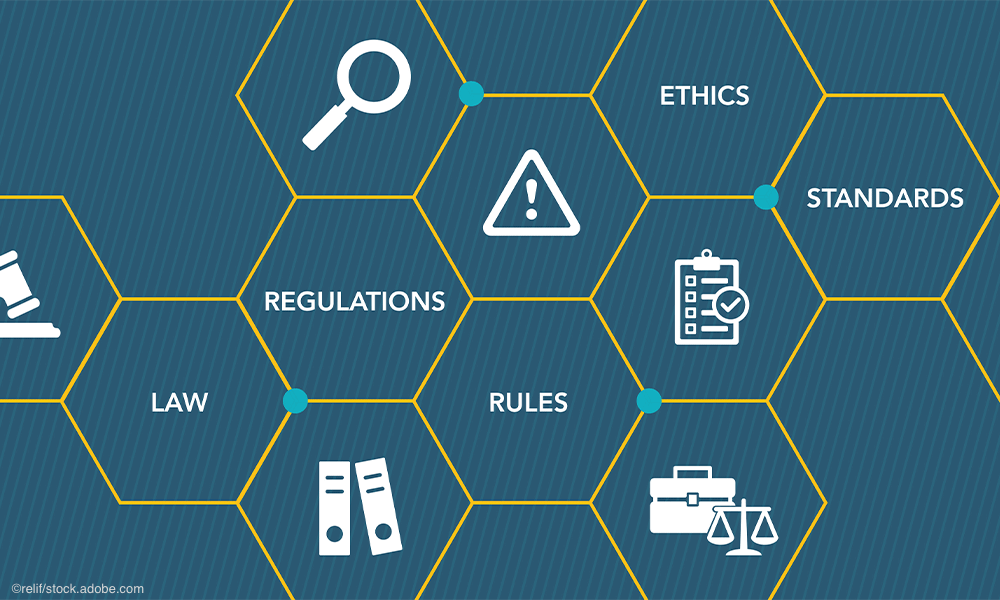The 21st Century Cures Act: How patient engagement can help your practice remain compliant
The best way to protect your practice is to ensure you are using patient engagement technology that complies with regulations.

In March of 2019, the Office of the National Coordinator for Health Information Technology (ONC) issued what is commonly referred to as the Information Blocking Rule to the 21st Century Cures Act. Information blocking was defined as any practice that is likely to unreasonably interfere with the access, exchange, or use of electronic health information.
As the American Medical Association points out, information blocking can occur in several ways and doesn’t necessarily have to be intentional on the part of providers. For example, patients might encounter information blocking if they are unable to access health records or transfer data to another physician. This could ultimately lead to patient complaints and potential penalties.
Although complaints have been filed against more the 170 health care providers in 2022 so far, there have been no investigations for information blocking by individual provider practices – yet. The Office of the Inspector General (OIG) has provided guidance on potential sanctions including up to a $50,000 fine for each incident, and one thing is clear: practices must act quickly or soon face regulatory compliance issues.
The best way to protect your practice is to ensure you are using patient engagement technology that complies with regulations, specifically a patient portal that makes access to health information easy and is positioned to adjust as patient and regulatory expectations around access to health information evolves.
Patient engagement, patient portals, and the Cures Act
Online patient portals are the critical patient engagement gateway to digital information access and Cures Act compliance. Through patient portals, patients are given 24/7 entry to secure personal health information from anywhere, anytime, and with no costs to download records.
Something to bear in mind is that patient portals are not created equal. Often, legacy portals utilize outdated integration methods and have interfaces that are neither modern in appearance nor intuitive to use, which can put healthcare organizations at risk. Patients that have trouble with portal technology may mistake a poor user experience as an intentional attempt at information blocking and lodge a complaint.
A portal that automatically delivers information to the patient, rather than relying on provider or staff action to trigger data moving from the patient record to the portal, is another critical functionality to recognize. Lab results, for example, are often anticipated by patients. Portals that automatically push results, within normal limits, to patients greatly reduce patient wait times, while also protecting providers from any accusations of information blocking.
For providers, patient portals and patient engagement tools can solve an array of other needs, such as:
- Decreasing administrative burdens – Portals and digital patient engagement tools, such as patient intake and registration with online forms, can streamline front desk activities to reduce labor while decreasing time patients spend in the waiting room. Online patient self-scheduling greatly reduces phone calls to the office and allows patients to schedule appointments after working hours, a convenience many have come to expect in today’s consumer environment. Tools that notify patients of upcoming appointments and overdue balances decrease no-shows and accelerate cash flow.
- Enhancing communication – Secure messaging has long been the backbone of patient communication within portals, reducing inbound phone calls and stimulating engagement. Modern solutions further augment messaging with workflows that allow patients to confirm or reschedule appointments, pay bills through text, and ask questions about their most recent results. As consumer demand for digital engagement increases, there will be continued growth in the adoption of not just these tools, but newer technologies like video telehealth as well. Remote visit options increase patient access to healthcare and their ability to stay on track with their care plans, while creating additional revenue streams for healthcare organizations.
- Reducing legal risk – As of October 6, 2022, the ONC expanded its definition of information blocking. Today, data that must be accessible not only applies to the data elements contained to the United States Core Data for Interoperability, but also to electronic protected health information (ePHI). ePHI is the Designated Record Set (DRS) as defined in the Health Insurance Portability and Accountability Act (HIPAA). In other words, any data a patient has access to under HIPAA now applies to information blocking. An integrated portal solution can be mapped to confirm this data is included. Patient portals can also help providers manage proxy relationships for minors in states that limit access to health information by parents or caregivers.
Protect your practice with integrated patient engagement solutions
The volume of data healthcare organizations needs to manage increases daily and the regulations concerning the data will likely continue to evolve. Practices that provide modern patient portals and patient engagement solutions are best positioned to protect themselves from information blocking complaints and potential fines while enhancing the patient experience throughout the care journey.
Gary has led InteliChart since its inception in 2010. He brings a wealth of clinical and technical expertise associated with consumer-patient engagement and provider practice operations. Gary drives corporate strategy, product innovation, and direction toward one common objective: to enable providers to successfully engage and empower their patients to attain positive outcomes. Over the years, Gary's work has led to the evolution of InteliChart's Patient Portal into a full platform of engagement solutions that address automated patient scheduling, appointment reminders, digital intake, telehealth, patient feedback, and population health initiatives. Prior to InteliChart, Gary held leadership positions with Integrated Healthcare Solutions and Atlantic Healthcare Management.